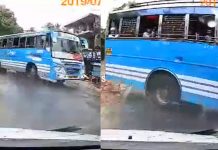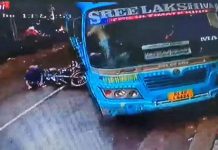Driving is the controlled operation and movement of a motor vehicle, including cars, motorcycles, trucks, and buses. Permission to drive on public highways is granted based on a set of conditions being met and drivers are required to follow the established road and traffic laws in the location they are driving.
Driving in traffic is more than just knowing how to operate the mechanisms which control the vehicle; it requires knowing how to apply the rules of the road (which ensures safe and efficient sharing with other users). An effective driver also has an intuitive understanding of the basics of vehicle handling and can drive responsibly.
Extra Ordinary Drivers of KSRTC; Like a BOSS – THUG Life
Great bus drivers don’t just drive, they care. They go beyond the job description to ensure their passengers have the best experience possible on their journey – no matter where they are going or what their story is.
But what are some other qualities that make great bus drivers? If you want to be happy, appreciated, and confident in your position, it’s important that you have a few key personality traits. Here are some qualities that make a great bus driver:
1. They’re personable.
2. They’re willing to lead.
3. They’re calm under pressure.
4. They’re dedicated to their work.
5. They’re respectful of others.
Bus drivers need to:
COMMUNICATE
- Understand spoken information.
- Speak clearly so listeners can understand.
- Listen to others and ask questions.
- Understand written information.
REASON AND PROBLEM SOLVE
- Notice when something is wrong or is likely to go wrong.
- Concentrate and not be distracted while performing a task.
- Analyze ideas and use logic to determine their strengths and weaknesses.
- Follow guidelines to arrange objects or actions in a certain order.
- Use reasoning to discover answers to problems.
MANAGE ONESELF, PEOPLE, TIME, AND THINGS
- Go back and forth between two or more activities or sources of information without becoming confused.
- Manage the time of self and others.
- Check how well one is learning or doing something.
WORK WITH PEOPLE
- Look for ways to help people.
- Be aware of others’ reactions and understand the possible causes.
WORK WITH THINGS
- Operate and control equipment.
- Watch gauges, dials, and output to make sure a machine is working properly.
PERCEIVE AND VISUALIZE
- Know one’s location in a physical setting and recognize where other objects are located in relation to oneself.



















